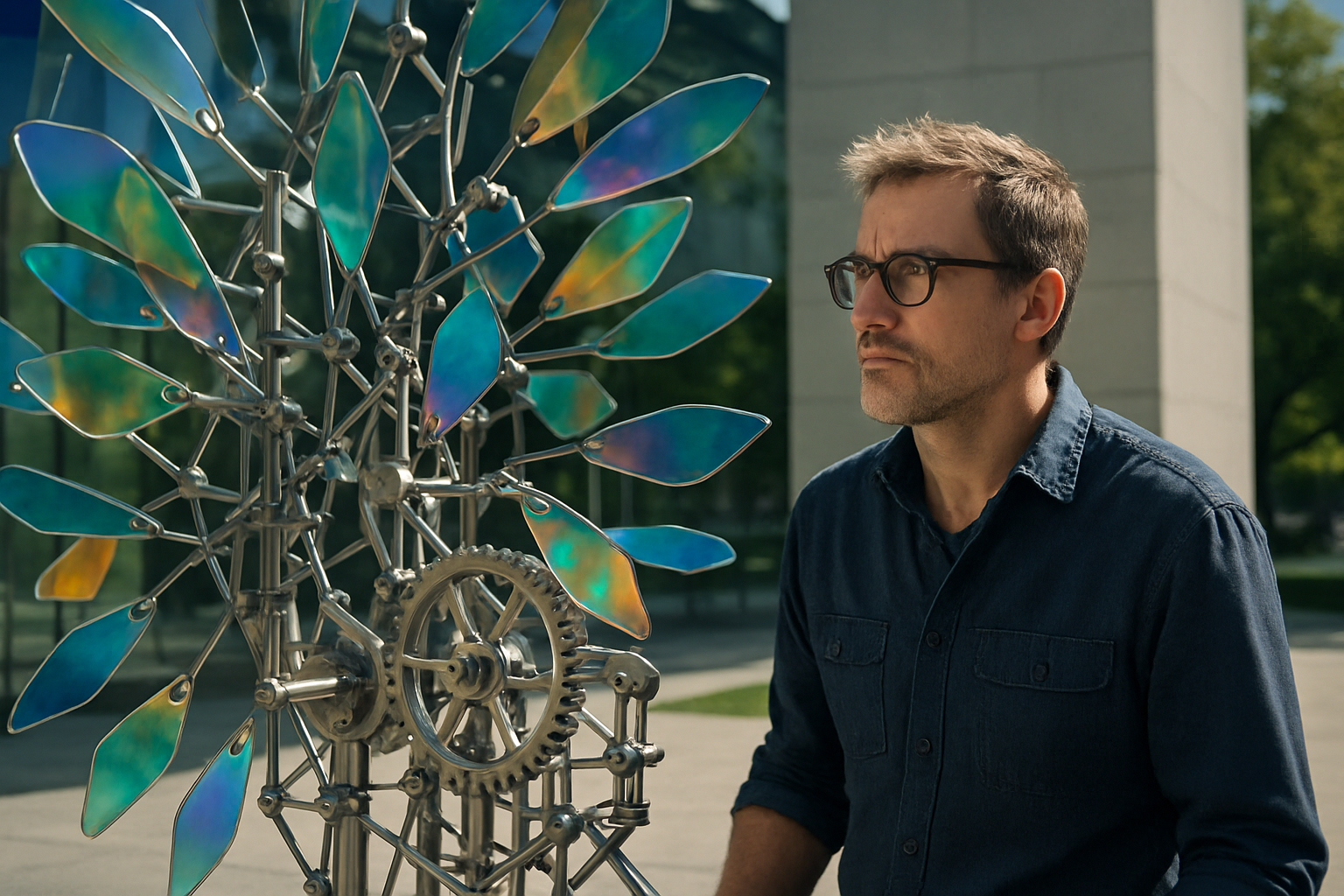The Kaleidoscope of Kinetic Sculpture
In the ever-evolving landscape of contemporary art, kinetic sculpture emerges as a mesmerizing fusion of motion and form. This dynamic medium challenges traditional notions of static art, inviting viewers to engage with pieces that pulse, rotate, and transform. As galleries and public spaces increasingly embrace these captivating creations, kinetic sculpture is carving out a significant niche in the art world, captivating audiences with its blend of engineering ingenuity and artistic vision.

Mechanics Meet Aesthetics
At its core, kinetic sculpture marries the precision of engineering with the creativity of fine art. Artists in this field must possess a unique skill set, combining knowledge of mechanics, materials science, and design principles. The result is often a delicate balance between form and function, where the beauty of the piece is enhanced by its movement rather than overshadowed by it.
The Digital Revolution in Kinetic Art
The advent of digital technology has ushered in a new era for kinetic sculpture. Artists now incorporate sensors, microcontrollers, and sophisticated software to create responsive and interactive pieces. These smart sculptures can react to their environment, audience presence, or even data streams, blurring the lines between art, technology, and performance.
Environmental Kinetic Sculptures
One of the most exciting developments in the field is the rise of large-scale, outdoor kinetic sculptures. These installations harness natural forces like wind, water, or sunlight to power their movements, creating ever-changing displays that harmonize with their surroundings. From seaside promenades to urban plazas, these works transform public spaces into dynamic galleries, accessible to all.
The Psychological Impact of Movement
Kinetic sculptures possess a unique ability to captivate and engage viewers. The constant motion draws the eye and holds attention, often eliciting a sense of wonder or meditation. Psychologists and art therapists are beginning to explore the potential therapeutic benefits of kinetic art, noting its capacity to reduce stress and promote mindfulness through its hypnotic movements.
Challenges and Conservation
As kinetic sculptures gain popularity, new challenges emerge in their preservation and maintenance. Unlike traditional static artworks, these pieces require regular upkeep to ensure their mechanisms continue to function as intended. Conservators are developing specialized techniques to care for these complex works, balancing the need to preserve the original components with the imperative to maintain the integrity of the movement.
The Future of Kinetic Sculpture
As technology continues to advance, the possibilities for kinetic sculpture seem boundless. Artists are exploring new materials, such as shape-memory alloys and smart polymers, which could revolutionize the way these sculptures move and interact. Additionally, the integration of artificial intelligence may lead to sculptures that not only move but learn and adapt over time, creating truly evolving artworks.
Kinetic Art in the Commercial Sphere
The appeal of kinetic sculpture extends beyond the art world into commercial and corporate settings. Businesses are increasingly commissioning kinetic installations for lobbies, headquarters, and public spaces, recognizing their power to create memorable experiences and brand associations. This trend is opening up new opportunities for artists and expanding the reach of kinetic art to broader audiences.
Educational Potential
Museums and educational institutions are recognizing the unique ability of kinetic sculptures to engage students in STEM subjects. These artworks serve as tangible demonstrations of physics principles, engineering concepts, and mathematical relationships. As a result, kinetic sculpture is finding its way into curricula, inspiring a new generation of artists, engineers, and scientists.
In conclusion, kinetic sculpture stands at the forefront of artistic innovation, challenging our perceptions of what art can be and do. As it continues to evolve, incorporating new technologies and responding to contemporary issues, this dynamic medium promises to remain a vibrant and influential force in the art world for years to come. The movement of kinetic sculpture, both literal and figurative, propels the art form into exciting new territories, inviting us all to experience art in motion.





